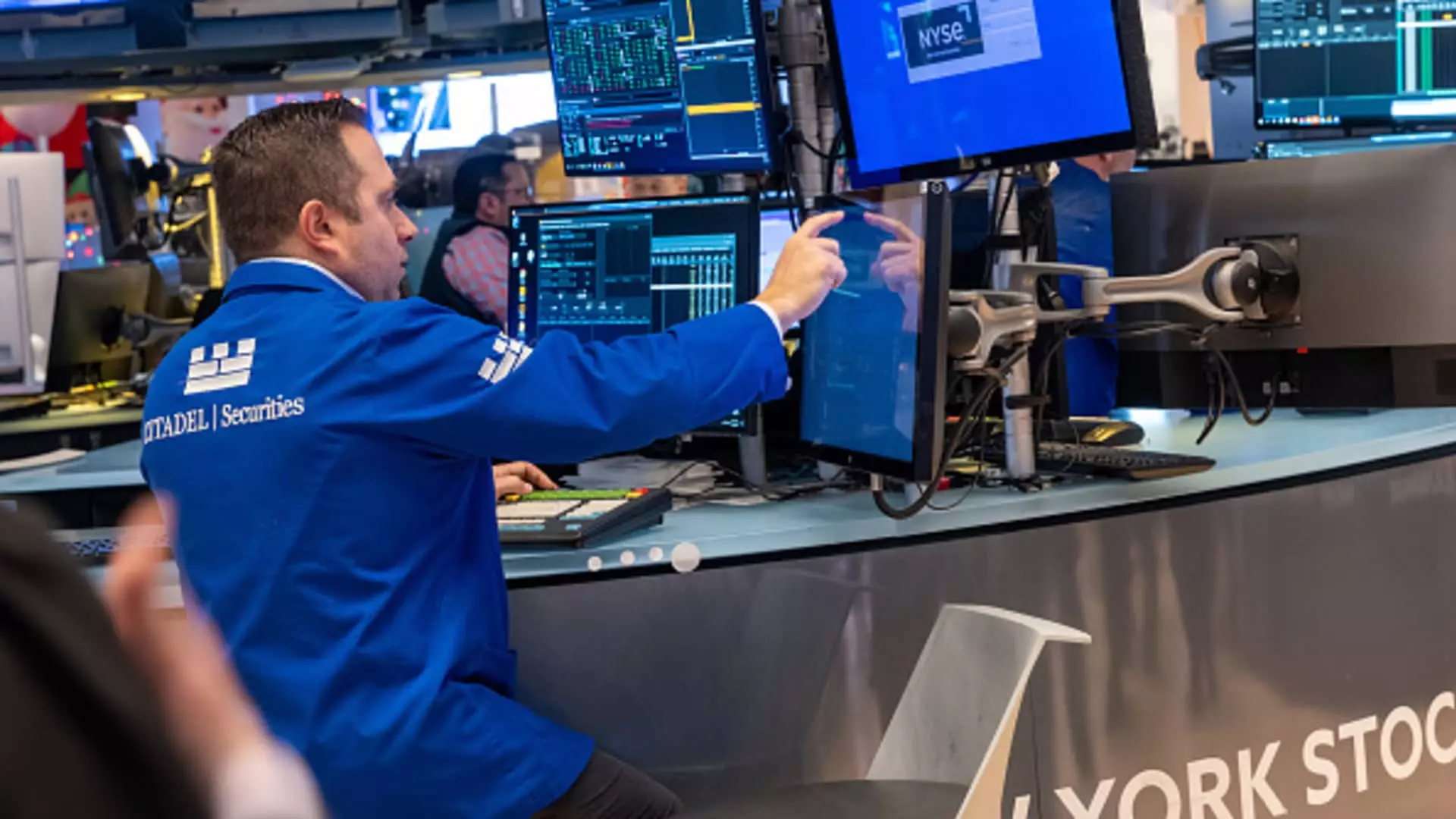Last Friday was a turbulent day for the stock market, as Wall Street reacted sharply to an unexpectedly robust jobs report. The Dow Jones Industrial Average, a bellwether for the overall market health, fell by 592 points, marking a 1.4% drop. In similar fashion, both the S&P 500 and Nasdaq Composite indices experienced declines of approximately 1.3%. These significant losses pushed the major benchmarks into the red for the year and set a discouraging tone for investors watching the economic tides.
The catalyst for this steep downturn was the release of U.S. payroll data, which revealed that the economy added 256,000 jobs in December—far surpassing the Dow Jones estimate of just 155,000. In a further twist, the unemployment rate unexpectedly fell from a projected 4.2% to 4.1%. While at first glance, these numbers paint a picture of economic strength, they simultaneously raised concerns about the Federal Reserve’s potential monetary policy decisions moving forward.
Financial analysts have long debated the complex relationship between strong economic indicators and stock market performance. Scott Wren, a senior global market strategist at Wells Fargo Investment Institute, noted the paradox: “Good news for the economy but not for the markets, at least for now.” Such statements illustrate a crucial point: while robust economic reports can indicate growth and opportunity, they may also hinder expectations for further interest rate cuts, a tool the Fed employs to stimulate economic activity.
In the wake of this astonishment, traders shifted their outlook significantly. Prior to the jobs report, there was a 97% probability that the Fed would maintain its current interest rates during their January meeting. This sentiment, however, was shaken as expectations changed, with the likelihood of any cuts for March plummeting from 41% to around 25% in a single day.
Bond Yields Spike Amid Investor Concerns
The economic report also had reverberating effects on the bond market, with the yield on the 10-year Treasury note reaching its highest levels since late 2023. Generally, rising yields denote growing investor confidence in the economy; however, they can also lead to increased borrowing costs. This particularly affects growth stocks, which tend to be more sensitive to interest rates due to their reliance on future earnings.
A notable case was chipmaker Nvidia, which saw its shares decline by 2.5%. Other tech firms like AMD and Broadcom also suffered losses, dropping 5.2% and 2.1% respectively. The small-cap Russell 2000 index also took a hit, underlying the widespread anxiety around rising rates, particularly among companies with smaller market capitalizations that may face sustainability challenges as borrowing costs rise.
Another layer of complexity was added by The University of Michigan’s consumer sentiment index, which registered at 73.2 for January, falling short of expectations. This decline, exacerbated by rising one-year inflation expectations, indicates that consumers are increasingly worried about price increases. With one-year inflation expectations rising from 2.8% to 3.3%, analysts remain cautious about the long-term implications.
Adam Turnquist, chief technical strategist at LPL Financial, commented on this trend, suggesting that the rapid rise in yields could signal a potential pullback or correction for the S&P 500. However, he also emphasized that the underlying economic strength is the primary driver, eventually leading to better earnings and a reduced recession risk, even as the market reacts negatively in the short term.
As the major stock indices continue to trend downwards, investors and analysts alike are left to grapple with the implications of Friday’s job figures. The S&P 500 has decreased by 1.8%, while the Nasdaq Composite is down 2.4% over the week. The Dow Jones is set for a decline of 1.6%, revealing an overall bearish sentiment.
While the job growth signals a recovering economy, the resultant market volatility underscores the fragile equilibrium between economic strength and investor sentiment. The stock market may be sending mixed signals; investors should prepare for a landscape of caution and recalibration as the Federal Reserve navigates its next moves. Whether this short-term sell-off will give way to a longer-term market recovery remains an open question, hinging on broader economic indicators and the Fed’s policy adjustments.


Leave a Reply